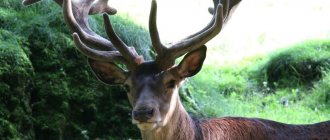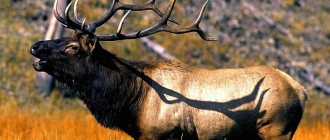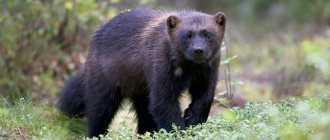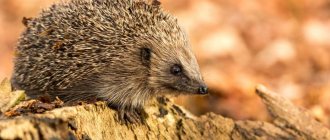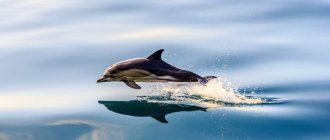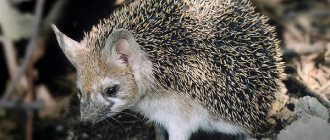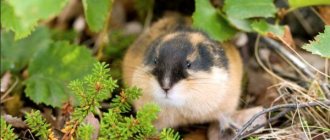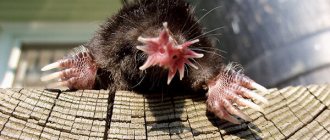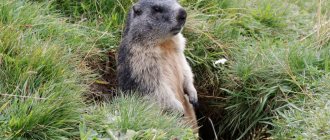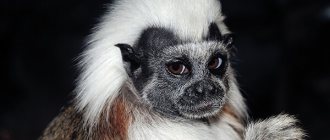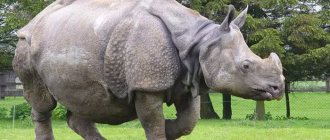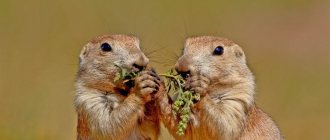The article explains:
- Features and habitat of deer in Altai
- Types of deer
- Character and lifestyle of deer
- Feeding characteristics of the Altai deer
- Reproduction and life expectancy of deer in Altai
- Top 7 maralniks in Altai for travelers
Deer in Altai are one of the calling cards of the region.
These are stunningly beautiful animals, especially the males with their gorgeous branched antlers. One of the characteristics of the deer is the healing properties of blood, which brought the animal to the pages of the Red Book. Currently, they are not killed for blood; horns are sufficient during the period when they are still growing and have not ossified. The extraction of horns is carried out in maral farms. For more information about how deer live in Altai and where you can come to see them live, read our material.
Man and deer
Anyone who has ever seen a live deer will probably remember for a long time this beautiful animal with its head raised proudly, on which branched horns spread. The proud posture of this beast reveals enormous strength and a rebellious disposition. Maral is practically the same deer, better known in Europe as red deer, in Siberia its variety is called wapiti, and in North America - wapiti. The maral, like all red deer, is a very large animal, second in size after the elk. Huge height up to 170 cm, weight up to 400 kg, strength and powerful horns give him the ability to withstand any predator. Even wolves do not always dare to attack an adult deer. In nature, deer are practically afraid of no one, but being very cautious by nature, they try not to show themselves to people. And there are good reasons for this. After all, deer have long been the main hunting prey of people. Only man was strong enough to encroach on this forest giant, and for many centuries he killed these beautiful animals, which are a real decoration of nature, in order to feed on their meat.
Of course, hunting is the only way a person could survive just a couple of thousand years ago. But why exactly a deer, and not a wild boar, a bear or any other animal, which were in abundance in those days? After all, hunting deer - this beautiful and strong beast - was far from entertainment. This sensitive and fast animal had to be tracked in the thicket of the forest, approached very carefully and dealt a deadly blow after which this powerful animal would not be able to fight back, otherwise the victim of this fight could not be the deer, but the hunter himself. The successful outcome of this hunt brought the opportunity to be fed for the whole tribe for many days. And if the hunter missed, in rare cases he remained alive and well. Possessing enormous strength, a wounded deer can injure or even kill more than one person. Ancient people believed that the souls of animals, just like the souls of people, could live after death. Among the tribes of Europe and Asia, the deer was considered the most revered animal, which may be why the ancient totem cult equalized this fight.
By deifying the deer, people adhered to the basic principle of survival of the human predator - “when you hunt animals, preserve them.” There was even such a belief: “It will be bad for anyone who kills more than two deer a year.” Red deer, wapiti, and maral are animals whose images have come to us from ancient times in the rock paintings of primitive people. One can imagine how emotionally inspired the ancient artist was to create such labor-intensive “petroglyphs” images on the rocks, in which deer most often were depicted in hunting scenes. The creation of drawings of deer on the rock was done with the hope of the patronage of the spirit, so that it would give prosperity to the person and save his life. An example of this is the petroglyphs of the Kalbak-Tash tract.
The Hermitage stores materials from excavations of burial mounds in Altai. Fragments of excavations of burials of noble people along with horses show that a deer mask with antlers was put on the horse. This is evidence that people represented the deer as a carrier to the other world, and for this purpose the horse was symbolically transformed into a deer. A common Eurasian myth has been preserved in which the deer is a kind of mediator between the worlds - middle, upper and lower. According to this myth, chasing a deer by a hunter will lead a person to a beautiful fairy-tale world or destroy him. In this sense, the deer is one of the most mythologically significant animals. In the paintings of artists of the Middle Ages, hunting scenes are constantly found, and most often the hunt for the Red Deer was depicted. Here is a painting by Briel Paulus, from the collection of Louis XIV, “The Deer Hunt”, painted in the 16th century, stored in the Louvre.
But centuries have passed. Man moved away from the ancient totem cult, acquiring other denominations of faith in deity. Over time, he received various opportunities to obtain food for himself besides hunting. People began to raise domestic animals and learned to grow edible plants, but deer hunting still attracted him. What is this connected with, why?
There are several purely practical reasons why deer are still the most popular hunting trophy, as well as why deer began to be domesticated. It has long been noted that deer meat is not only tender and pleasant to the taste, but also has amazing dietary and even medicinal properties. There is almost no fat in venison, and its energy value is only 155 kcal per 100 g. The meat of both deer and deer contains a lot of vitamins B1, B2 and PP, as well as microelements: iron, calcium, potassium, phosphorus, sodium, magnesium. Therefore, venison does not have a negative effect on the blood vessels and heart. It is recommended to be used for vitamin deficiency and metabolic disorders. The high content of vitamin B1 - thiamine has a stimulating effect on human brain activity. Thiamine is also an excellent antioxidant, which is why it reduces the negative effects of tobacco and alcohol use. Doctors often recommend that pregnant women consume deer meat, because it improves the tone of the muscles of the heart, stomach and digestive tract. It has been noticed that people who often eat venison are practically not susceptible to cancer.
Ecology
The most typical habitats for this species are mountain forest-steppes. It is these zones that allow him to gain the necessary weight for winter, eating the most healthy food. Among other deer, the deer turns out to be the most herbivorous. It is for this reason that it is more difficult for him to survive in snowy winters, eating only branches. Red deer are food for wolves, bears, even lynx and wolverine.
Lifestyle
There are two types of deer, the Altai deer living in western Siberia and the Altai region and the Tien Shan deer living in the Tien Shan mountains in Kazakhstan and Kyrgyzstan. Both species are still found in the wild, but most of them have been bred in special deer breeding farms for many years. Deer breeding is most widespread in Altai, which is located quite far from the industrial areas of the country. Altai has not yet been touched by “modern civilization” and a natural ecologically clean zone has been preserved here. In addition, the optimal altitude above sea level of these places and large food reserves just suitable for deer became fundamental factors for the creation of deer breeding farms here. That is why in our country there have been special farms for breeding deer in Altai for many decades. Some farms, created on the basis of Soviet deer state farms, contain several hundred animals. According to statistics, the Altai Republic is now home to about 40 thousand livestock.
Deer are kept on “free” pasture in natural conditions in large fenced areas. Deer live in small “families” headed by an adult male, who has a harem of three to five deer. Harems are kept by mature males between five and eight years old. Usually, after eleven years, the male is no longer able to maintain a harem and gives way to a younger, stronger deer.
In the spring, the mating season, called the rut, begins. The rut of deer is accompanied by a wild roar, peculiar sounds produced by the male. At this time, the males seem to go crazy. When excited, they break bushes and young trees with their horns. They make so-called “points” by raking the ground with their feet and spraying these places with urine. This seems to attract females. These days the trumpet sounds of deer can be heard at any time of the day during the month.
At this time, the head of the family has to protect his harem from the encroachment of young, already mature males. This is usually expressed in battles between the owner of the harem and the new challenger. After such battles with the harem, the winner remains. Wielding their huge horns, the deer engage in a life-and-death fight. Two males meet and beat each other with horns, which in some reach up to 120 cm in length, and also have 5-6 shoots. As a result of the battle, one of them gives up and leaves the battlefield; quite often in the fight they seriously injure each other. There were cases when in a fight the horns of rivals were so intertwined with each other that they could not separate on their own and in such an interlocked position both died. Sometimes, due to some abnormalities, some deer's horns grow incorrectly. They are long and directed forward. It costs such males nothing to kill an opponent in a fight. Such deer are called “killers”; hunters simply shoot them.
Females are slightly smaller than males and their color after molting is reddish-red; females do not grow horns. Usually during the rutting period they patiently wait for the outcome of the fight and follow the winner. True, sometimes a female can leave a harem and join another. Usually this does not meet with the objection of the head until the female has given birth, but after the rut the male keeps his harem under strict guardianship, not allowing anyone to leave. A year after the rut, in May-June, the female brings one fawn, rarely two. In the first days, the fawn is absolutely helpless and between feeding moments it simply hides, camouflaging itself in the thickets or tall grass, and so successfully that it cannot be seen even if it is a few steps away. Until the age of six months, fawns usually do not run away from danger, but simply hide and wait for their mother for days.
Deer are rather shy animals, but at the same time they are nervous, and sometimes aggression awakens in them. Young deer usually do not play, but rather arrange fights among themselves. It looks like a boxing match. Two deer rise on their hind legs and kick each other with their front legs, but it usually doesn’t get more serious. But the maralik, if the cub is in danger, can even rush at a predator. A blow from her foot could easily break the wolf's back or, in extreme cases, seriously injure him. Well, a male can simply crush a wolf with his horns.
Therefore, even large predators prefer to retreat at these moments. In water, a wolf cannot cope with a deer, because thanks to its high growth, that Red Deer has an advantage. In general, a wolf can only run over a deer by driving it onto ice or into a snow drift. Usually, wolves do not risk attacking a deer alone, only in a large pack. For young deer, the wolverine poses a great danger. This cunning and strong beast can easily kill a young, inexperienced deer. The wolverine tries not to get involved with adult deer.
But the deer is truly afraid of humans. As soon as they smell a person, they usually run away. Even if a person takes a deer calf in his arms, the female usually does not rush to his aid, but silently watches what is happening.
Cutting horns
Maral is an animal (there is a photo of it in this article) valued for its magnificent horns. It is because of this that special farms for breeding deer are created. Antlers have a tubular base in which blood accumulates. For medicinal purposes, the antlers of young deer are needed.
Antlers are cut in June. For deer, this procedure is painless. By the age of 2, a deer’s antlers weigh 9 kilograms. From 12 to 15 pairs of antlers are cut from one deer.
What do deer eat?
In the spring, deer feed mainly on grass while it is still green and lush. They pick grass quickly, up to 30 pinches per minute, and feed for an hour and a half, moving from place to place. When full, they lie down and chew the cud, almost like domestic cows. At this time, the young animals frolic under the supervision of adults. In the summer, when the grass grows, the deer tear off mostly the tops, without lowering their heads low to the ground, constantly looking around, and the herd is located so that everyone has a certain sector of view, but in general it turns out that the entire horizon is controlled. The deer rest in an open place so that everything around them can be seen.
By the way, deer are very fond of branches of bushes from the genus Ledum, growing in Altai, which is called “maralnik”. This shrub is very common in Altai. During the flowering of the maralberry, all the Altai mountains turn lilac-pink. This is simply an unforgettable picture. It is not for nothing that the time of flowering of maral in Altai is compared with the Hanami holiday in Japan. And although the marigold is scientifically called “Ledebourg rhododendron”, local residents do not know about it, but they have a sign: the marigold has bloomed - spring has come.
In winter, deer gladly eat branches and leaves of currants, willows, rowan trees, aspen, less often they eat honeysuckle or birch, and they do not refuse lichen, which they eat while shoveling snow, especially since there is an abundance of lichen in these parts. In farms that breed deer, they are fed more variedly; so-called hay stands and trays are placed in certain places. Therefore, if in the wild the deer usually lives no more than 15 years, then on farms they live up to 25-30 years.
Nutrition
The red deer is animal . Grass, branches of bushes, bark of aspens and other deciduous trees are the main food of these deer. The wapiti is busy collecting food in the morning and evening, sometimes devoting the whole night to this.
On the trunks of aspens, willows, and in places where wapiti live, it is not difficult to see the so-called gnaws. Based on the nature of the marks on the tree, it is easy to determine at what time the wapiti gnawed the bark. In spring, there is active sap flow in the trees. Red deer remove tree bark in entire ribbons, leaving no traces of teeth.
In winter, the bark has to be chewed off. Based on the marks of the incisor teeth, an experienced hunter determines the type of animal that left the gnawing. In winter, wapiti eat branches of bushes and deciduous trees more than frozen bark.
Minerals play an important role in the diet of wapiti. There is only one place where deer can get them in sufficient quantities - in salt licks. In such areas, animals find clay rich in ziolites, natural calcium and sodium compounds.
By eating it, deer provide their bodies with minerals that are especially necessary during the growth of antlers. In addition to herbivores, whose bodies require minerals, predators and people know about this. Both use salt licks to hunt wapiti and other artiodactyls.
Blood and antlers of deer
People have been familiar with the healing properties of deer blood for many hundreds of years. For many centuries, people have used the blood of this amazing animal as a remedy to strengthen the vitality of a person, delaying his old age. From historical sources it is known that even in ancient times, shamans healed even hopeless patients by forcing them to drink fresh deer blood, which was called nothing less than the “elixir of life.” By the way, this is still practiced among the indigenous inhabitants of Altai and the North. During the cutting of antlers, the people doing this drain the deer’s blood and immediately drink it, still hot. Of course, this spectacle is not for the faint of heart, but nevertheless it is a fact. This is what this procedure looks like today in one of the Altai reindeer herding farms.
In the civilized world, medicines made from the blood and antlers of deer are used for medicinal purposes. Scientific research has proven that the blood of deer indeed contains a whole range of substances beneficial to human health. First of all, these are proteins, fats, macro and microelements, as well as amino acids, nucleic acids, hormone-like substances, steroids, peptides, vitamins and many other components that have not yet been studied by science, but undoubtedly have a beneficial effect on the human body. In practice, it has been observed that blood, both from the vessels of the body and from the antlers of the deer, is equally biologically active.
Scientists in many countries for many years tried to obtain an effective medicine from the blood of deer, so that it would have its miraculous power, but only in 1934 by a group of Soviet scientists S. M. Pavlenko, A. S. Tevi, L. N. Shchepetilnikov and V. S. Kiselev invented a method for obtaining the active drug from deer antlers. The drug was called “Pantocrine”. And when, after more than 30 years of testing and approbation, this drug was patented in 1967 under number 195049, it was decided to create a special deer state farm in Altai for breeding deer in order to obtain antlers from them for the production of pantocrine. This millionaire state farm existed until the end of Soviet power, and now at its base there is a nursery for breeding deer.
The raw material for the manufacture of medicines is pantocrine - an alcohol-water extract from non-ossified deer horns. Antlers begin to be cut off from deer at the age of two, so that one deer produces 12-15 pairs of antlers in its entire life. Antlers are harvested in May-June during the rutting season, when males have the most pronounced biological activity. Males that have grown large antlers are selected from the herd and separated into a special pen. Then, one by one, they are driven into a narrow corridor, passing through which the deer gets to a special machine where the animal’s head is fixed.
The operation is quite difficult and the work involves several people who hold the animal, and one of them cuts off the antlers with a grinder or an ordinary hacksaw.
Then the cut site is cauterized and the frightened animal is released. The distraught deer storms out of the room where this execution took place. And don’t get in his way, he’ll knock anyone over.
Considering that the weight of one pair of antlers is about 5-6 kg, and currently in the Altai Republic there are about 40,000 marals and in addition 4,500 sika deer, it is not surprising that on average almost 30 tons of antlers are received from them per year, which mainly exported. For Altai this is a huge profit, almost half of all exports, in monetary terms this is about 4 million US dollars per year.
There is no need to worry about a deer whose antlers have been cut off. In a few months, new ones will again appear on his head, although they will not have time to grow more than half a meter. But this will not harm him.
Reproduction
Baby maralas with their mothers
Sexual maturity of a female deer occurs at 2 years. For males this age is slightly higher - 5 years. As a rule, the female chooses a partner based on the size of his horns and large build. Interesting fact: conception occurs in several attempts (sometimes their number can reach 12 times). Pregnancy lasts up to 265 days. As a rule, deer give birth to only one calf, in rare cases two. The average weight of a newborn does not exceed 16 kg.
Medicines and cosmetics
The unique properties of the Altai deer are not found in any other animal and are therefore valued all over the world. For many years, antlers were harvested only in Russia, Siberia and Altai. A small part was used to obtain pantocrine, and the rest was bought by pharmaceutical companies in China and Korea, where they are used to prepare medicines that are in great demand all over the world, including in Russia. Although in recent years, domestically produced drugs have begun to appear. Pantocrine has been the main one for many years. It is available in the form of a hydroalcoholic extract or in tablets. It is used internally for weakness of the heart muscle, low blood pressure, after a heart attack, for fatigue and neuroses.
In recent years, taking medicinal baths with preparations made from deer antlers with the addition of minerals and fir essential oils has become very popular. These drugs are produced in the form of salts containing a whole complex of mineral components and natural extracts. The indications are the same as for pantocrine, but they act more gently and have fewer contraindications; they are used in balneological treatment and at home. A whole line of such salts has been developed.
Cosmetics made from raw materials from antlers have become widespread. According to reviews, they give excellent results for skin rejuvenation, treatment and prevention of skin diseases.
Interesting Facts
Local residents respect some animals so much that sculptures are erected for them. Red deer received this honor. In the Irkutsk region, in the Bayandaevsky district, on the border with the Ekhirit-Bulagat municipality, a monument to the red deer was erected. It was created by Pavel Mikhailov, a local artist and sculptor.
The installation of the sculpture took place in July 2014. Since then, the monument has become the most photographed cultural site in the region. But the sculpture of the proud animal awakens the hunting instinct of some tourists: the stone wapiti has had its leg broken off more than once.
It’s not just the animal’s legs that are valued. Traditional medicine uses elixirs that have many therapeutic properties.
- Tincture from wapiti veins
- Elixir from the reproductive organ of a male wapiti.
- Alcohol infusion of the tail gland of red deer.
- Tincture from the heart of wapiti.
- Pantohematogen is actually coagulated deer blood.
- Red deer antlers infused with alcohol.
In addition to tinctures, all these parts of red deer are used dried and even unprocessed. Local residents and especially the Chinese use many parts of the wapiti body as a means to strengthen the immune system and improve the quality of life.
Residents of the north highly value the red deer camus. This is the skin from the lower leg of an animal. Used for padding skis. Used in the manufacture of mittens and other clothing items. You can’t sew good high boots without a camus. The camus of various artiodactyls is used, but the red deer is considered one of the best.
Maral breeding
Reindeer breeding for antlers has recently begun to be practiced in Scandinavian countries, Scotland and the Baltic states. Particular mention should be made of the successes of reindeer husbandry in New Zealand. In no more than 4 decades, several pairs of deer were brought to this country and they began breeding them. As a result, there are now almost two million deer in New Zealand. The income of reindeer farmers collectively amounts to almost 200 million US dollars. Now New Zealand is Russia's main competitor in the export of antlers. This looks somewhat strange, the idea of using antlers for medicinal purposes and harvesting them in industrial quantities, which appeared more than a century and a half ago in Siberia, now improves the welfare of New Zealanders! Well, the deer themselves seem to be doing not bad at all in New Zealand, rather the opposite.
I would certainly like to hope that deer breeding in Russia will rise to the proper level. Moreover, with the creation of modern domestic technologies, antlers are increasingly being acquired by Russian pharmaceutical companies, which have begun producing medicines and dietary supplements based on pantocrine, which, in the light of the sanctions imposed on Russia by Europe, is becoming very economically profitable. And for the people living in Siberia and Altai, this industry will truly become prosperous and bring high income to both people and the entire region, especially since the Altai deer was and remains the best of all the deer in the world.
Types of deer
In ancient times, the area where deer lived was much wider, but today these deer are listed in the Red Book. Despite many measures taken, deer are on the verge of extinction. Therefore, there are deer breeding farms where specialists are engaged in their breeding and protection.
Types of deer
Deer were first mentioned in the 18th century in the works of Pallas. Biologists have been studying these animals for many decades, but only in the 30s of the 20th century did people learn in detail who the deer were thanks to specialists from the Altai Nature Reserve.
In 1873, the Altai maral was registered as an independent species. True, a hundred years later it was classified only as a subspecies of red deer, namely, the Siberian group. The Western and Central Asian groups are also distinguished.
